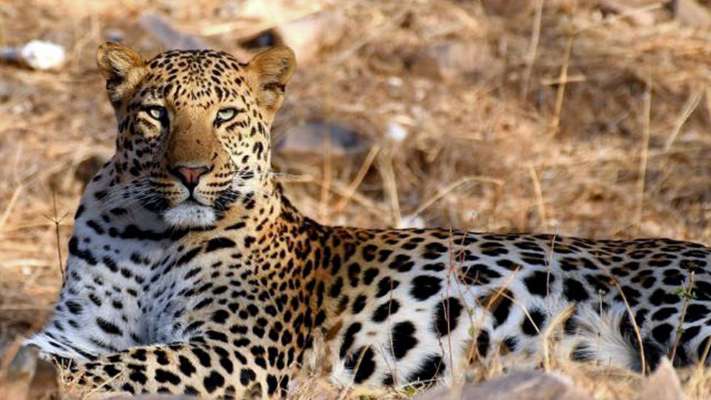Jaipur, May 30: With an alarming average of 34 leopard deaths every year in Rajasthan, according to a report, as many as 238 big cats have died in the desert state from January 2012 to May 21, 2018.
Listed at par with tigers under Schedule 1 of the Wildlife Protection Act (WPA), 1972, the population of leopards faces a serious challenge due to various reasons, prominent among those are man-animal conflicts, availability of prey base and road/train accidents.
Quoting the report, out of the total deaths that occurred during the above mentioned period, 84 were found dead – both natural and unnatural – while 52 were killed in road/train accidents and 31 due to infighting.
“24 were killed in seizure and poaching, 19 were killed by villagers, 14 by tiger or other animals whereas electrocution and rescue operations claimed seven deaths each,” as per the data of Wildlife Protection Society of India (WPSI).
Till May 21 this year, 23 leopard deaths were recorded. While 11 were found dead, 12 were killed, the WPSI data reveals. Talking on the issue, Forest and Environment Minister Gajendra Singh Khimsar noted that the rise in population of leopards could be one of the reasons behind increase in the conflict between man and animal. He claimed that the government is making all efforts to avoid such conflicts where villagers are forced to kill animals in their self-defence.
“We have launched one of its kinds ‘Project Leopard’ to increase prey base so that animals do not stray out for food and water. Under the project, boundary wall work will finish in next two months in Jhalana Forest Reserve in Jaipur,” Khimsar said.
As per the wildlife census reports of past two years, the leopard count has increased from 434 in 2015 to 508 in 2016. Having said that, according to many wildlife activists it is the depletion of natural prey base in forest areas that had led to the shifting of wild animals towards killing of livestock.
“The forest department has not made appropriate arrangements such as water and prey base. Animal population is increasing so animals have started moving into habitations and agriculture fields in search of food and water,” said People For Animals (PFA) state president Babu Lal Jaju.
